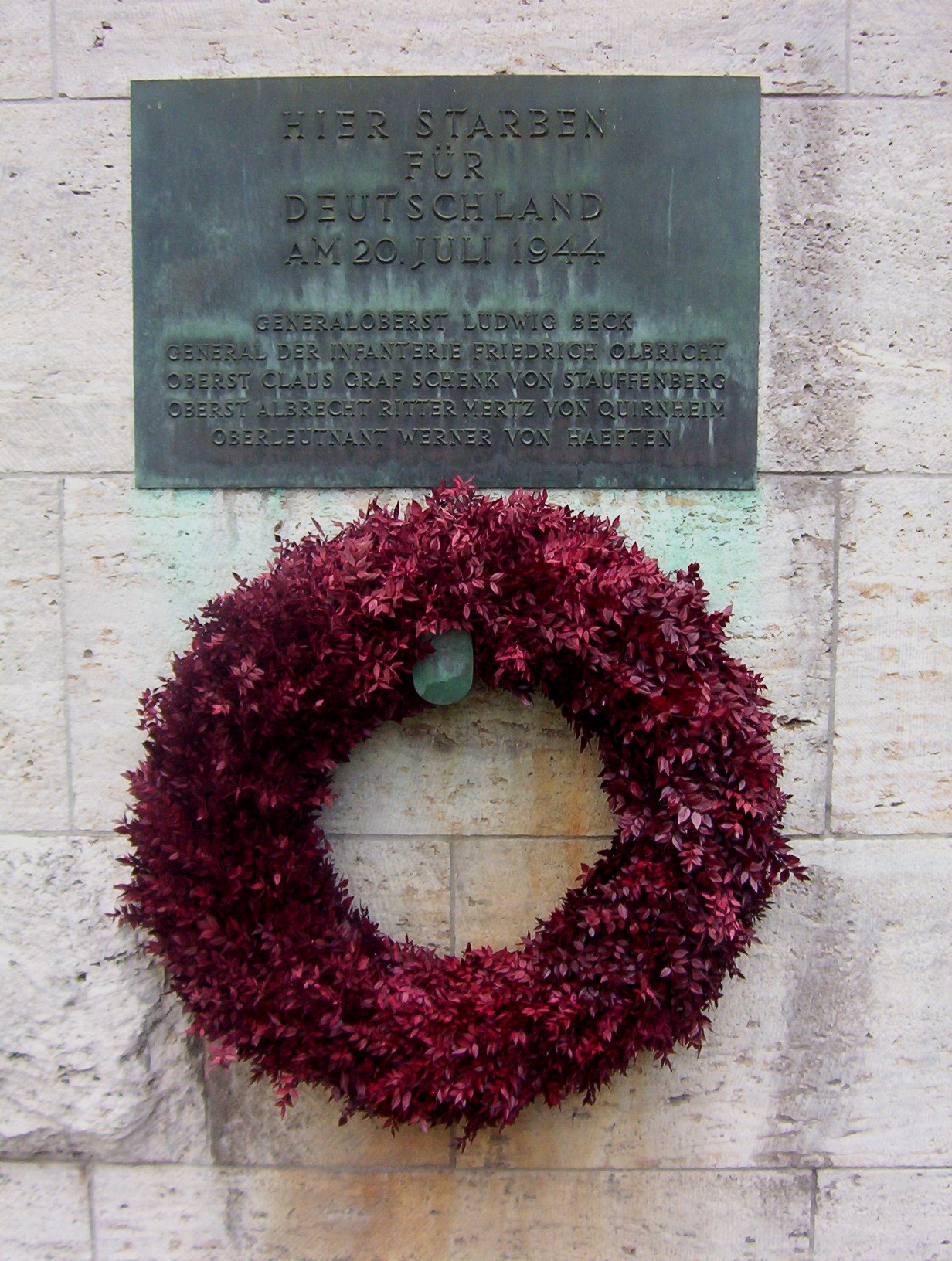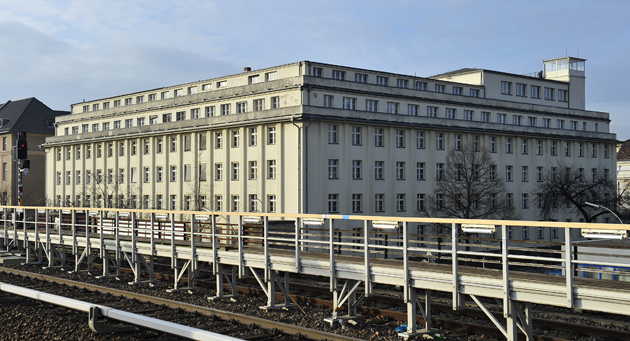|
Georg Thomas
Georg Thomas (20 February 1890 – 29 December 1946) was a German general who served during World War II.Mitcham and Mueller, ''Hitler's Commanders'', pgs. 17-20. He was a leading participant in planning and carrying out economic exploitation of the Soviet Union, most notably the Hunger Plan. Thomas's role in plotting against Hitler has led some historians to describe him as a member of the German resistance, while others find his record more ambiguous.Hans Rothfels, ''The German Opposition to Hitler: An Appraisal'', pg. 79. Career summary Thomas was born in Forst (Lausitz), Brandenburg. Thomas joined Infantry Regiment 63 as an ensign and a career soldier in 1908. From 1928, he dealt with armament questions at the (Army Weapons Office) in the Reich Defence Ministry in Berlin. From 1928 to 1938, Thomas worked as the Chief of Staff for the Army Weapons Office in the Reich Defence Ministry, where he studied national economics and war preparations, pushing forward the idea of ... [...More Info...] [...Related Items...] OR: [Wikipedia] [Google] [Baidu] |
Forst (Lausitz)
Forst (Lausitz) ( German, ) or Baršć (Łužyca) (Lower Sorbian, ; Polish: Barść) is a town in Lower Lusatia, Brandenburg, in eastern Germany. It lies east of Cottbus, on the Lusatian Neisse river which is also the German- Polish border. It is the capital of the Spree-Neiße district. It is known for its rose garden and textile museum. The town's population is 18,651. In Forst, there is a railway bridge across the Neiße belonging to the line Cottbus–Żary which is serviced by regional trains and a EuroCity train between Hamburg and Kraków (2011). There is also a road bridge across the river north of Forst. Incorporated villages * Forst (Lausitz) – Baršć (Łužyca) ** Domsdorf – Domašojce ** Eigene Scholle – Swójske Grunty ** Eulo – Wiłow ** Försterei Keune – Gólnikaŕnja Chójna ** Keune – Chójna ** Mexiko ** Noßdorf – Nosydłojce * Bohrau – Bórow * Briesnig – Rjasnik * Groß Bademeusel – Wjelike Bóžemysle * Groß Jamno – Jamne * Horno ... [...More Info...] [...Related Items...] OR: [Wikipedia] [Google] [Baidu] |
German Resistance To Nazism
The German resistance to Nazism () included unarmed and armed opposition and disobedience to the Nazi Germany, Nazi regime by various movements, groups and individuals by various means, from assassination attempts on Adolf Hitler, attempts to assassinate Adolf Hitler or to overthrow his regime, defection to the enemies of the Third Reich and sabotage against the German Army and the apparatus of repression and attempts to organize armed struggle, to open protests, rescue of persecuted persons, dissidence and "everyday resistance". German resistance was not recognized as a united resistance movement during the height of Nazi Germany, unlike the more organised efforts in other countries, such as Italian Resistance, Italy, Danish resistance movement, Denmark, the Soviet partisans, Soviet Union, Polish Underground State, Poland, Greek Resistance, Greece, Yugoslav Partisans, Yugoslavia, French Resistance, France, Dutch resistance, the Netherlands, Resistance in the Protectorate of Bo ... [...More Info...] [...Related Items...] OR: [Wikipedia] [Google] [Baidu] |
Steel
Steel is an alloy of iron and carbon that demonstrates improved mechanical properties compared to the pure form of iron. Due to steel's high Young's modulus, elastic modulus, Yield (engineering), yield strength, Fracture, fracture strength and low raw material cost, steel is one of the most commonly manufactured materials in the world. Steel is used in structures (as concrete Rebar, reinforcing rods), in Bridge, bridges, infrastructure, Tool, tools, Ship, ships, Train, trains, Car, cars, Bicycle, bicycles, Machine, machines, Home appliance, electrical appliances, furniture, and Weapon, weapons. Iron is always the main element in steel, but other elements are used to produce various grades of steel demonstrating altered material, mechanical, and microstructural properties. Stainless steels, for example, typically contain 18% chromium and exhibit improved corrosion and Redox, oxidation resistance versus its carbon steel counterpart. Under atmospheric pressures, steels generally ... [...More Info...] [...Related Items...] OR: [Wikipedia] [Google] [Baidu] |
Iron
Iron is a chemical element; it has symbol Fe () and atomic number 26. It is a metal that belongs to the first transition series and group 8 of the periodic table. It is, by mass, the most common element on Earth, forming much of Earth's outer and inner core. It is the fourth most abundant element in the Earth's crust, being mainly deposited by meteorites in its metallic state. Extracting usable metal from iron ores requires kilns or furnaces capable of reaching , about 500 °C (900 °F) higher than that required to smelt copper. Humans started to master that process in Eurasia during the 2nd millennium BC and the use of iron tools and weapons began to displace copper alloys – in some regions, only around 1200 BC. That event is considered the transition from the Bronze Age to the Iron Age. In the modern world, iron alloys, such as steel, stainless steel, cast iron and special steels, are by far the most common industrial metals, due to their mechan ... [...More Info...] [...Related Items...] OR: [Wikipedia] [Google] [Baidu] |
Reichswerke Hermann Göring
Reichswerke Hermann Göring ("Hermann Göring Reich Works") was an industrial Conglomerate (company), conglomerate in Nazi Germany from 1937 until 1945. It was established to extract and process domestic iron ores from Salzgitter that were deemed uneconomical by the privately held steel mills. The state-owned Reichswerke was seen as a vehicle of hastening growth in mining, ore mining and steelmaking, steel output regardless of private capitalists' plans and opinions, which ran in alignment to Adolf Hitler's strategic and economic vision. In November 1937, Ministry of Aviation (Nazi Germany), Reichsminister of Aviation Hermann Göring obtained unchecked access to state financing and launched a chain of mergers, diversifying into military industries with the absorption of Rheinmetall. Göring himself supervised the Reichswerke but did not own it in any sense and did not make personal profit from it directly, although at times he withdrew cash for personal expenses.Overy, p. 145.Gella ... [...More Info...] [...Related Items...] OR: [Wikipedia] [Google] [Baidu] |
Petroleum
Petroleum, also known as crude oil or simply oil, is a naturally occurring, yellowish-black liquid chemical mixture found in geological formations, consisting mainly of hydrocarbons. The term ''petroleum'' refers both to naturally occurring unprocessed crude oil, as well as to petroleum products that consist of refining, refined crude oil. Petroleum is a fossil fuel formed over millions of years from anaerobic decay of organic materials from buried prehistoric life, prehistoric organisms, particularly planktons and algae, and 70% of the world's oil deposits were formed during the Mesozoic. Conventional reserves of petroleum are primarily recovered by oil drilling, drilling, which is done after a study of the relevant structural geology, sedimentary basin analysis, analysis of the sedimentary basin, and reservoir characterization, characterization of the petroleum reservoir. There are also unconventional (oil & gas) reservoir, unconventional reserves such as oil sands and oil sh ... [...More Info...] [...Related Items...] OR: [Wikipedia] [Google] [Baidu] |
Werner Von Fritsch
Thomas Ludwig Werner Freiherr von Fritsch (4 August 1880 – 22 September 1939) was a German ''Generaloberst'' (Full General, full general) who served as Oberkommando des Heeres, Commander-in-Chief of the German Army (Wehrmacht), German Army from February 1934 until February 1938, when he was forced to resign after he was falsely accused of being homosexual. His and Ministry of the Reichswehr, War Minister Werner von Blomberg, Blomberg's ousting, in the Blomberg–Fritsch affair, Blomberg-Fritsch affair, was a major step in Adolf Hitler's establishment of tighter control over the armed forces. Just over a year later, before the outbreak of World War II, Fritsch was recalled as Colonel-in-chief of the 12th Artillery Regiment. He died in battle in General Government, Poland early in the war, the second German general to perish in that conflict after Wilhelm Fritz von Roettig. Early life Fritsch was born in Düsseldorf-Benrath, Benrath in the Rhine Province of the German Empire. He ... [...More Info...] [...Related Items...] OR: [Wikipedia] [Google] [Baidu] |
Berlin
Berlin ( ; ) is the Capital of Germany, capital and largest city of Germany, by both area and List of cities in Germany by population, population. With 3.7 million inhabitants, it has the List of cities in the European Union by population within city limits, highest population within its city limits of any city in the European Union. The city is also one of the states of Germany, being the List of German states by area, third smallest state in the country by area. Berlin is surrounded by the state of Brandenburg, and Brandenburg's capital Potsdam is nearby. The urban area of Berlin has a population of over 4.6 million and is therefore the most populous urban area in Germany. The Berlin/Brandenburg Metropolitan Region, Berlin-Brandenburg capital region has around 6.2 million inhabitants and is Germany's second-largest metropolitan region after the Rhine-Ruhr region, as well as the List of EU metropolitan areas by GDP, fifth-biggest metropolitan region by GDP in the European Union. ... [...More Info...] [...Related Items...] OR: [Wikipedia] [Google] [Baidu] |
Reich Defence Ministry
The Ministry of the Reichswehr () was the defence ministry of Germany from 1919 to 1938 during the Weimar Republic and early Nazi Germany periods. It was responsible for the ''Reichswehr'' under the leadership of the Minister of Defence and based in the Bendlerblock building in Berlin. The Ministry of the Reichswehr was formed from the Prussian Ministry of War in the aftermath of World War I as part of a centralisation of the armed forces to Berlin from the states of Germany. Its longest serving Weimar-era Defence Ministers were the civilian Otto Gessler (almost 8 years) and General Wilhelm Groener (4 years). It was renamed the Reich Ministry of War in 1935 under the Nazis and led by General Werner von Blomberg as the Minister of War. It was abolished in 1938 and replaced with the ''Oberkommando der Wehrmacht'' (Armed Forces High Command) under the direct command of Adolf Hitler. History Formation On 6 March 1919, the Weimar National Assembly – Germany's post-war interim ... [...More Info...] [...Related Items...] OR: [Wikipedia] [Google] [Baidu] |
Waffenamt
(WaA) was the German Army Weapons Agency. It was the centre for research and development of the Weimar Republic and later the Third Reich for weapons, ammunition and army equipment to the German Reichswehr and then Wehrmacht. It was founded 8 November 1919 as (RWA), and 5 May 1922 the name was changed to (HWA). The task of overseeing Germany's gigantic pre-World War II German re-armament, rearmament program was given to the (the Army Acceptance Organization, commonly referred to as the ), a subsidiary of the . By 1940 the consisted of 25,000 personnel in five departments in 16 inspection areas, augmented by specially selected plant personnel who were assigned to assist the inspectors in each manufacturing facility. Later, in the middle of 1944, approximately 8,000 of these inspectors were "freed for service at the front". The was responsible for the testing and acceptance of all weapons, equipment and ammunition before delivery to the . Inspections were carried out acc ... [...More Info...] [...Related Items...] OR: [Wikipedia] [Google] [Baidu] |





